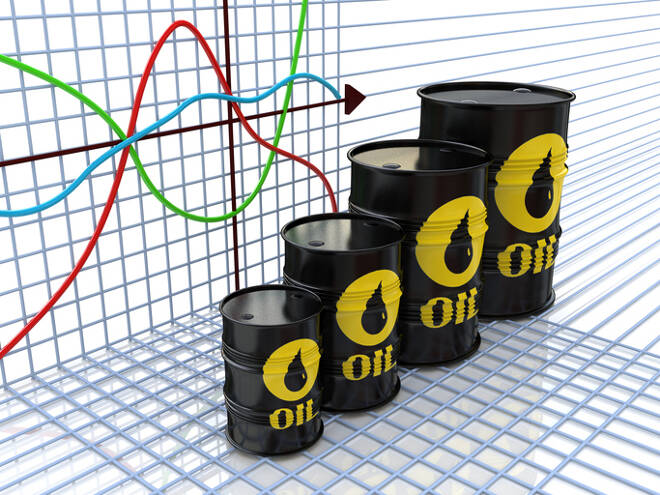Advertisement
Advertisement
Oil Price Fundamental Weekly Forecast – US, Saudi’s Make Moves to Keep Oil Production Safe
By:
The primary concerns for traders this week will be whether Saudi Arabia will be able to repair its damaged oil production facilities in a timely manner and whether they can protect their production facilities and oil fields from further attacks.
U.S. West Texas Intermediate and international-benchmark Brent crude oil futures finished higher last week with all of the gains driven by escalated tensions in the Middle East, following the September 14 attack on Saudi Arabian oil production facilities. Needless to say, the trading was quite volatile with markets surging more than 10% on Monday then dropping 5% the next session before settling into a range the next three days.
Last week, November WTI crude oil futures settled at $58.09, up $3.29 or +6.00% and December Brent crude oil finished at $63.20, up $3.95 or +6.25%.
The gains last week were attributed to the risk premium traders have placed on the market just in case the Saudis can’t repair their oil production facilities in a timely manner or there is another attack.
Global Spare Capacity Major Concern
Underpinning WTI and Brent crude oil last week were concerns that the attacks on Saudi Arabia limited the country’s spare capacity. The attacks and outage occurred at a time when global available spare capacity is extremely low. This leaves little room for additional unplanned outages, which tends to be very supportive for prices.
The Saudis said they could restore its lost production by the end of this month, and bring its output capacity back to 12 million barrels per day by the end of November. In the meantime, it said it had restored supplies to customers at levels prior to the attacks by drawing from its oil inventories.
The move by the Saudis to meet customer needs suggests they will have no spare capacity for at least the next two and a half months or by the end of November. This means they will have no way to absorb any future shocks to production or supply.
Can Saudi Arabia Keep There Oil Fields Safe?
Most traders agree that the central message from the attacks is the vulnerability of Saudi infrastructure. This is another reason for the placing of a risk premium.
On Friday, U.S. Secretary of Defense Mark Esper announced the Pentagon will deploy U.S. forces to the Middle East to protect Saudi oil interests.
“The president has approved the deployment of U.S. forces which will be defensive n nature and primarily focused on air and missile defense,” Esper said, adding that Saudi Arabia requested the support. “We will also work to accelerate the delivery of military equipment to the Kingdom of Saudi Arabia and the UAE to enhance their ability to defend themselves,” he added.
Crude Oil Inventory
U.S. crude oil inventories increased 1.1 million barrels from the previous week, according to the Energy Information Administration (EIA). Traders were looking for a decrease of 2.1 million barrels. This also helped put a lid on prices.
Due to the attacks and the lost production, the demand picture is likely to be skewed so the EIA reports may show larger-than-average draws of U.S. crude oil inventory for several weeks.
Weekly Forecast
Trading conditions have calmed considerably since last Sunday’s gap-higher opening and follow-through spike to the upside. However, the subsequent price action suggests that much of that move was fueled by short-covering and buy stops with very few speculators chasing prices higher.
The primary concerns for traders this week will be whether Saudi Arabia will be able to repair its damaged oil production facilities in a timely manner and whether they can protect their production facilities and oil fields from further attacks.
We’re looking for the risk premium to remain intact for several weeks since the Saudis are drawing on inventory, repairs are still taking place and the threat of further attacks on their oil production facilities have not been contained or eliminated.
Before the market can really become stable, Saudi inventories are going to have to return to pre-attack levels, the damaged facilities are going to have to be repaired and working at full capacity and further threats will have to be prevented.
That’s a lot to ask for so traders have to take protection against the worst case scenarios. In my opinion, this is likely to keep prices supported.
About the Author
James Hyerczykauthor
James Hyerczyk is a U.S. based seasoned technical analyst and educator with over 40 years of experience in market analysis and trading, specializing in chart patterns and price movement. He is the author of two books on technical analysis and has a background in both futures and stock markets.
Advertisement
